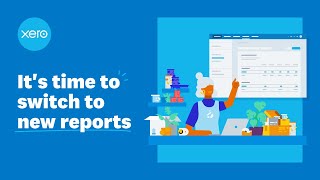How to manage your cash flow effectively and accurately
Is your small business cash flow story a tale of triumph or tragedy?
Cash flow is one of the most challenging aspects of running a business. With so much money coming in and going out, it is difficult to know exactly whether you are making a profit. This leads many businesses to hurtle towards insolvency, often without even realising.
Some of the signs you are not in a great place in terms of cash flow are as follows:
- Trouble paying bills
- Unable to pay staff superannuation
- Can’t afford to make quarterly BAS payments
- Being rejected for loans and finance
- Unclear financial records
This article will walk you through the steps to manage your small business cash flow effectively and accurately.
1. KNOW YOUR NUMBERS
Your business’s assets, minus its liabilities equals equity/profit.
It’s a simple equation but many business owners fail to pay attention to exactly how much is coming and the amount which is going out in the form of payments to suppliers, staff, creditors etc.
As a business owner, you need to be clear on how much your organisation is spending each month on items including:
- Staff wages, entitlement and superannuation
- Supplies and equipment
- Subscriptions
- Vehicles
- Loans
- Marketing
- Tax and GST
You also need to know where your revenue is coming from, e.g:
- Types of goods
- Services
- Contract jobs
- Memberships
- Interest
If you want to stay on top of cash flow, the revenue generated by the above must exceed the amount being spent.
Take note: You may be relying on loans or your personal funds to keep the cash flowing but this will eventually become unsustainable if your business expenses are not supported by sufficient revenue.
2. REVIEW YOUR BALANCE SHEET
Think about the assets (real and intangible, current and noncurrent) and the liabilities (current and noncurrent) in your business.
- Are they making you money?
- Are they helping you grow your business?
- Are they providing security?
All business assets should contribute to the generation of income.
Your balance sheet will show you whether your current assets and liabilities have the right ratio. Ideally, the financial value of your assets should be more than your liabilities. It all comes back to the equation of having more money coming in than going out.
Take note: If you have more liabilities/debts than the value of your assets, your small business cash flow is likely to become a problem. You will also find it tricky to access loans.
Review your balance sheet with the help of your accountant to figure out exactly where you stand in this area.
3. DO YOUR FORECASTING
To control small business cash flow, it helps to have an idea of what the future holds.
You don’t need a crystal ball to tell you the future with absolute precision but it is possible to make educated assumptions about future expenditure.
Doing forecasting will:
- Give you advanced warning of possible cash shortages
- Ensure you have the cash to pay suppliers, wages, loans, GST etc
- Provide reassurance to lenders and investors that your business is being properly managed
Your accountant can help you with forecasting based on past performance, future events (e.g. EOFY sales or new staff members coming on board) and upcoming expenses.
Here’s what to include in your forecasting:
- Monthly forecasts for a 12 month period
- Detailed 90-day forecast
- Owners drawings
- Loan repayments and interest
- Regular expenses
- Tax and GST
- Income
4. GET PAID ON TIME
The more money you have regularly coming into your business, the easier it will be to manage cash flow.
Do the following to make sure you have a healthy influx of cash and don’t find yourself constantly chasing clients for money:
- Get paid upfront; ask for deposits or payments in advance of services
- Reframe your terms and credit policy so you charge a premium for late payment, not a discount for early payment.
- Offer payment plans or memberships so clients pay you regularly
- Pass on credit to someone else, consider finance products which your clients can apply for so you get the money upfront and the creditor takes over collection of the funds
- Ask for the money! Send automated reminders for overdue bills and pick up the phone to chase people up
- Minimise the risk of bad debts by getting signed agreements from your clients
5. CONTROL EXPENDITURE
No matter how much money you have coming into your business, unless you have endless investors and lenders who want to support you, the bottom line is you need to spend less than you earn.
You need to ‘stop the bleed before it happens’ by:
- Budgeting and planning for as many expenses as possible
- Maintaining systems for purchase ordering
- Regularly reviewing expenses
- Having policies for expenditure
- Keeping strict control over who can spend money on behalf of the business
- Negotiating discounts for early payments
- Scheduling regular payments
- Avoiding ad hoc spending as much as possible
- Using interest-free periods
6. MAKE PROFIT A PRIORITY
What’s most important is to know what profit looks like for your business.
Here are some steps to ensure you can do this:
- Do the Profit First workshop or read the book by Mike Michalowicz
- Understand and optimise your profit model
- Understand and manage your balance sheet
- Understand your cash flow in relation to profit (e.g. do you get cash upfront then spend it or are you maxing out credit sources before working your way back into the black as clients make payments?)
- De-risk your profit through client ratios, terms and conditions, legal agreements
7. NEVER SET AND FORGET
If you are having trouble with small business cash flow, face your issues, embrace them and get others involved to help. There are plenty of tactics an accountant can show you which will help you to get things under control and identify that you may not be as deeply in the red as you think.
Once you have figured out how much money you need to generate a profit, reviewed your income, checked your expenditure and done some forecasting, don’t assume cash flow will take care of itself.
Regular updates will help you to ensure things are flowing the way you need them to so your business remains profitable.
Work with your accountant and take a proactive approach to find ways to optimise cash flow and boost your profits even further.
Speak with an accountant to help you get on top of your small business cash flow for good. Contact Imagine Accounting on 02 9884 7100




